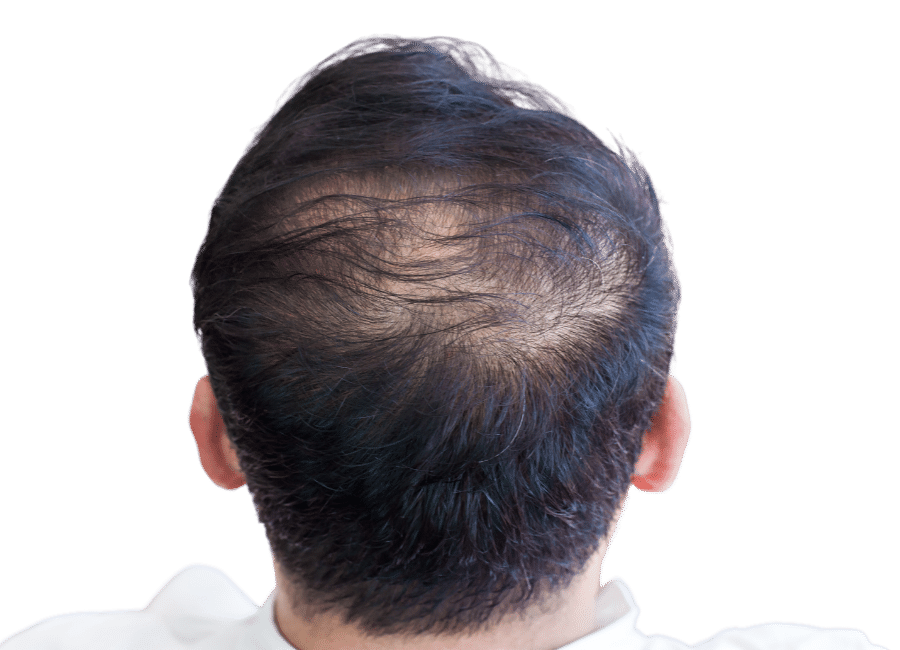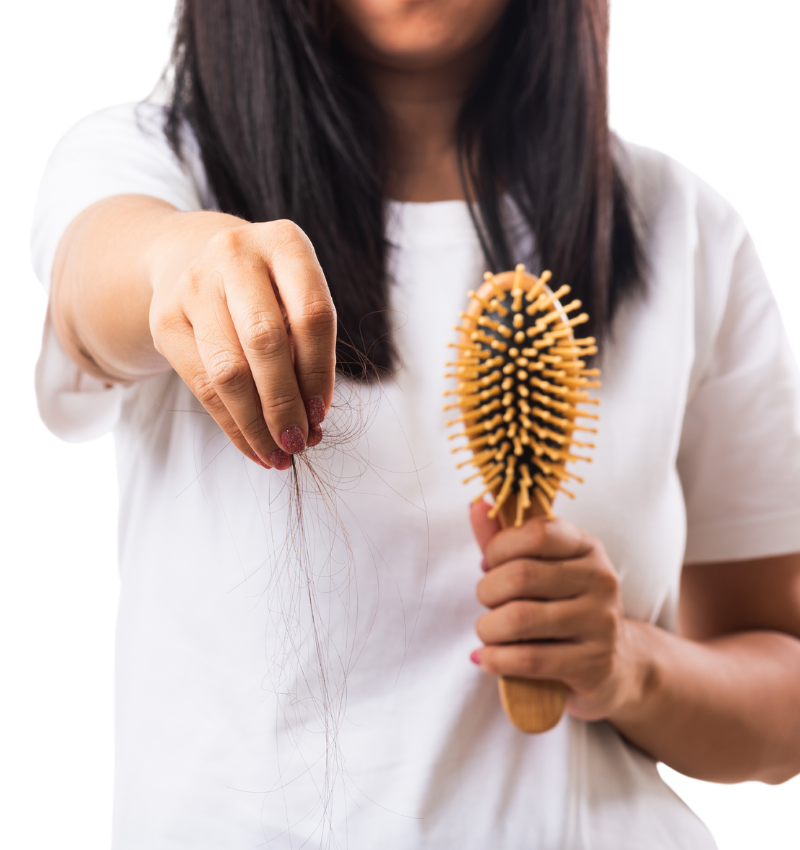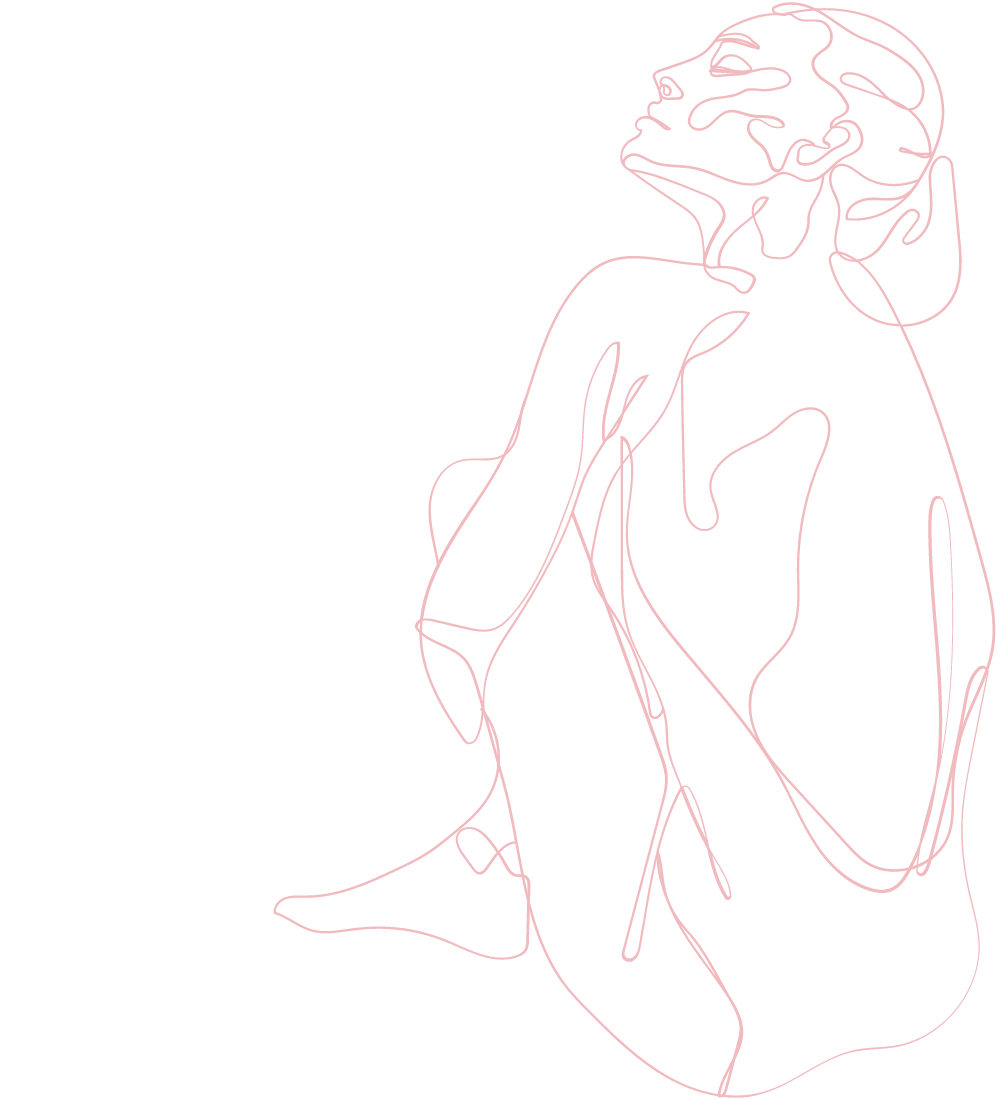Valley Dermatology
The Underlying Cause of Hair Loss
Are you losing more hair than usual? Your dermatologist should be the first place you go for hair loss treatment and diagnosis.

Solving the mystery of hair loss
Are you noticing more hair buildup in your shower drain or on your hairbrush? Are bald spots forming on your head? You could be experiencing hair loss, or alopecia, and it’s more common than you think. There are many causes of hair loss, so it’s not always straightforward to find the cause. The loss could be connected to an underlying issue such as a disease, vitamin deficiency, hormone imbalance, or infection. Your dermatologist will know how to properly examine your symptoms and create a proper treatment plan.
Who can experience hair loss?
Men, women, and children can all experience this, and it shows up differently in everyone. The most common place for hair loss to show up is the top of the head, where a gradual thinning of the hair is observed. Patchy bald spots can appear. Sometimes, the skin becomes itchy or painful before the hair is lost.
Watch for these signs of hair loss and possible underlying conditions in each population:
- Hair loss in men usually shows up as a receding hairline
- Hair loss in women can create a broadening of the part in their hair, or a receding hairline in older women
- Hair loss in children will show up as bald spots or thinning hair
If your hair is loosened, then a noticeably larger amount will fall off when showering or brushing. Handfuls of hair may come out when combing or washing your hair or even after gentle tugging. This type of hair loss usually causes overall hair thinning but is temporary.

Alopecia

What are the causes of alopecia?
The causes of hair loss range from diseases or infections to genetics and lifestyle habits. There is usually an underlying condition that causes alopecia. Usually, treating the condition will prevent you from losing any more hair. Since there are multiple possible causes, it’s best to be diagnosed by an expert like one of our dermatologists that treat hair loss.
Emotional or physical shock
Stress, heavy emotions or physical shock can cause the hair to loosen, causing clumps to be easily pulled out or fall out when brushing.
Infections
Ringworm and related scalp infections are immune-related, and will cause hair loss that can come with redness, swelling, and, at times, oozing.
Hormonal changes
Hormone imbalances, pregnancy, childbirth, menopause, and thyroid problems can cause hair loss. The symptoms of hair loss related to a hormone imbalance, infection, or even a vitamin deficiency are all very similar. It’s best to diagnose this with a blood test or biopsy in your dermatologist’s office.
Disease
There are multiple diseases that can cause hair loss. A specific type of alopecia called alopecia areata causes your hair to come out, often in clumps the size and shape of a quarter. There is also trichotillomania, which is a disorder that creates the incessant desire to pull out your hair.
Risk factors
There are several risk factors for hair loss, including family history, age, significant or rapid weight loss, medical conditions like diabetes or lupus, stress, and poor nutrition.
Treatments for hair loss
After your alopecia is diagnosed and your dermatologist has discovered the cause, it’s time to treat it. If the cause of your hair loss was not an underlying condition, there are many medical treatments for hair loss like medicine, topical creams, and even laser treatments.
- Prescription-strength corticosteroids applied directly to bald spots can help hair grow back.
- Corticosteroids that are injected can also help your hair regrow. These injections are usually given every 4 to 8 weeks as needed
- Minoxidil is a medication that helps hair grow and is often sold under the name Rogaine®. It is often used alongside a corticosteroid to maintain regrowth.
- For those with alopecia areata, contact immunotherapy, or topical immunotherapy, has been found to be successful in 60-70% of patients. The goal of this treatment is to change your immune system so that it stops attacking your hair follicles.
- Platelet-rich plasma (PRP) is an effective treatment that involves separating the plasma from the rest of your blood and injecting the plasma into the affected areas, helping hair grow.
- Women with female pattern hair loss can take the medication spironolactone, which helps to stop further hair loss and increase hair thickness. Do not take this drug while pregnant, as it can cause birth defects.
- Laser treatment is also an option for those who don’t want to take medication. This is a low-level laser therapy, and there are options to use this at home.
Talk to your dermatologist if you observe hair loss, as it could be an underlying medical condition. Our dermatologists will review the affected areas and will tell you what type of hair loss you’re experiencing and suggest a treatment plan.

